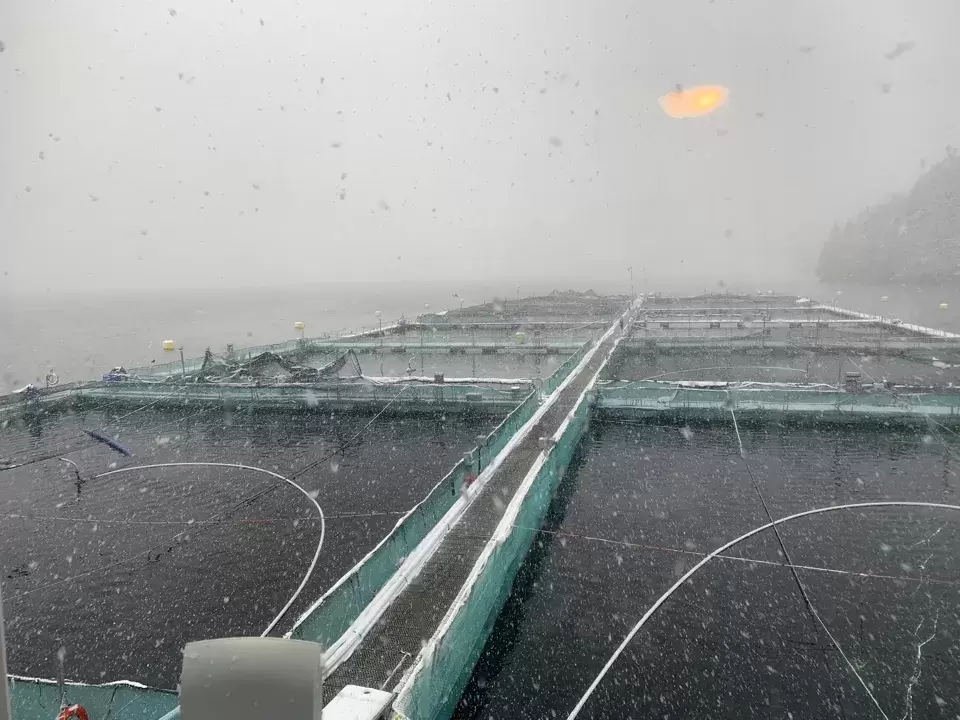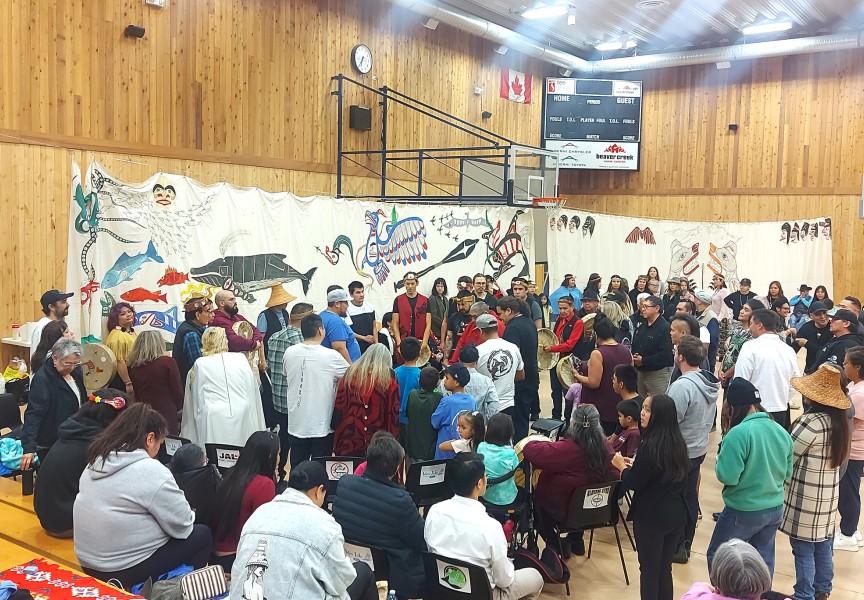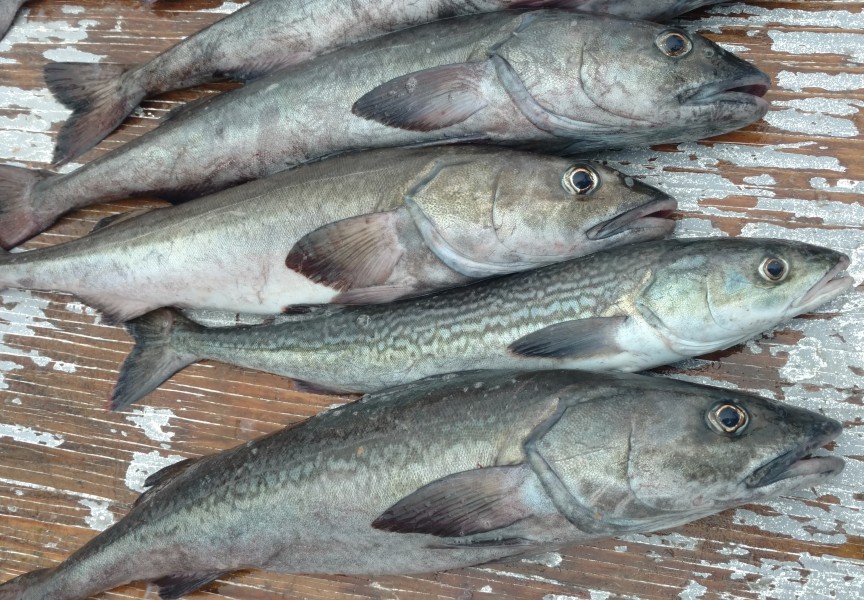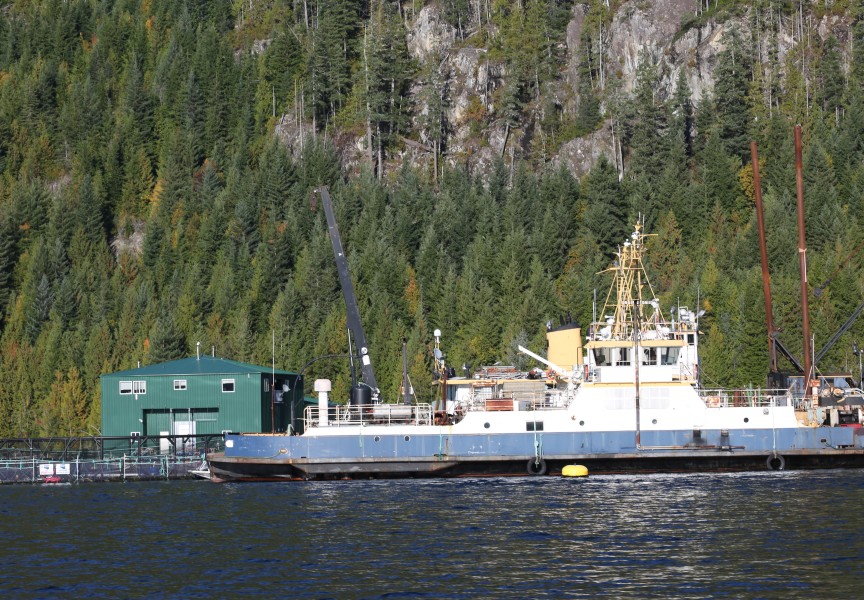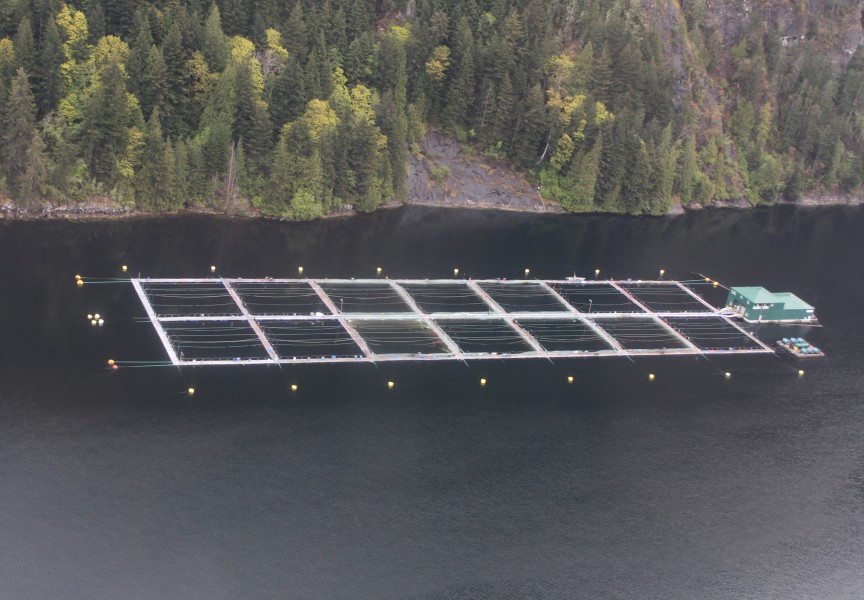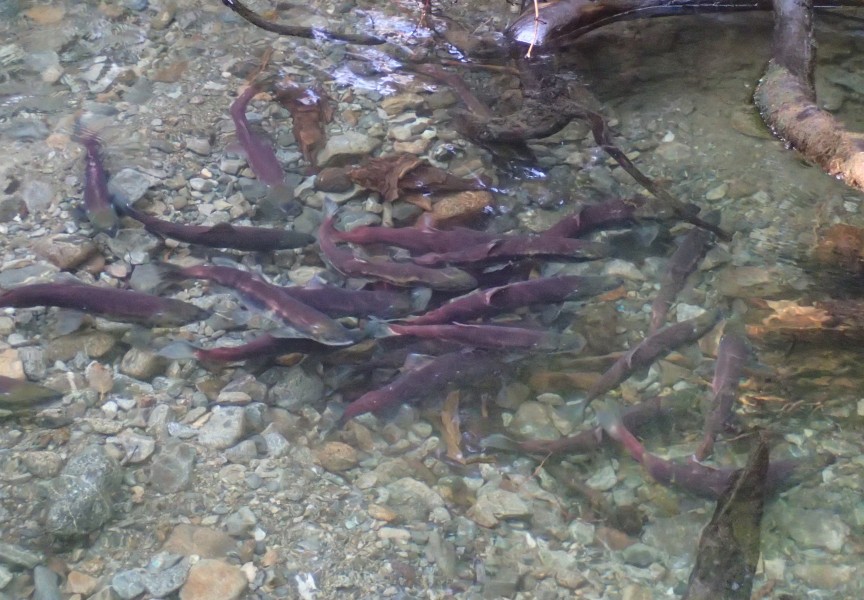Grieg Seafood BC Ltd. is introducing a new semi-closed containment system to all three of its fish farms in Esperanza Inlet, off the west coast of Vancouver Island.
The new CO2L Flow system allows fish farmers to raise and lower farm enclosures, allowing farmed fish to benefit from the natural ecosystem, while protecting wild salmon, Grieg Seafood said in a release.
As ocean-based farmers, Rocky Boschman, Grieg Seafood BC Ltd. managing director, said one of the most commonly raised concerns is the transfer of sea lice between wild and farmed populations.
The semi-closed system has “drastically” reduced the number of sea lice in farmed populations, he said.
Indeed, open-pen fish farms are criticized by some scientists who claim they transfer dangerous amounts of sea lice to wild populations, contributing to the collapse of B.C.’s wild stocks. As wild juvenile salmon migrate past fish farms, many fear they’re especially vulnerable to the parasites that wreak havoc on their immune systems, increasing their risk of disease.
During the periods of wild salmon migration, or when there are harmful algae in the region, Dean Trethewey, Grieg Seafood’s director of saltwater production, regulatory and fish health, said barriers within the closed-containment systems can be lowered to prevent lateral interaction between wild and farmed salmon populations.
This “significantly reduces the transmission of sea lice between the populations,” he said.
Three cycles of fish have been raised in the new system since Grieg launched the first trial in 2019 at its farms off the Sunshine Coast.
“During the trial while the barriers were deployed, we did not have to treat for sea lice within the semi-closed system, while our other farms in the area were treated twice for sea lice during this same period,” said Trethewey.
Fish raised in the trial system also saw an increase of growth by around 40 per cent, a 19 per cent survival increase.
Grieg Seafood BC is part of the Norwegian multinational Grieg Group and operates 22 fish farms within the province. As one of the largest salmon farming companies in B.C., Grieg is aiming to harvest 22,000 metric tonnes of fish in 2022.
Salmon farming companies are required to report lice counts higher than three motile lice per fish during the wild juvenile salmon outmigration, which runs annually from March 1 to June 30, Trethewey said.
“As a company, our goal is to keep lice well below this threshold, and once we start to see counts rise [above] 1.5 motile lice per fish, our treatment planning process is triggered,” he added.
While these semi-closed systems prevent sea lice from travelling into the farms, Grieg Seafood said it doesn’t stop the movement of pathogens.
Tla-o-qui-aht First Nation Councillor Terry Dorward said the new system doesn’t go far enough.
“The technology is there to go closed,” said Dorward. “Industry just needs to smarten up and move in that direction. For too long, there has been an increase in pathogens and a decline in wild salmon.”
In recent years, B.C. salmon numbers have hit record lows. Only two wild Chinook salmon returned to the upper Kennedy watershed in 2021, meaning the population has seen a 98 per cent decrease, reported Jessica Hutchinson, Central Westcoast Forest Society executive director and ecologist.
Prime Minister Justin Trudeau recently called for new Fisheries Minister Joyce Murray to continue to work with B.C. and Indigenous communities on a plan to transition from open net-pen salmon farming by 2025.
For Dorward, 2025 isn’t soon enough.
“We're [seeing] such decline in wild salmon stocks … we need to act now if we're ever going to have healthy fisheries on the west coast,” he said. “I don’t have a lot of faith in the federal government.”
Numerous studies suggest the global demand for blue foods will nearly double by 2050, which will be primarily met through increased aquaculture.
“As a company, we will continue to look for ways in which we can innovate and continue to improve our operations,” said Boschman, adding the company is looking for solutions that will recover solid waste produced by the farms.
“There is no denying that this new system represents a transition towards what in-ocean farms can one day become,” he said.

